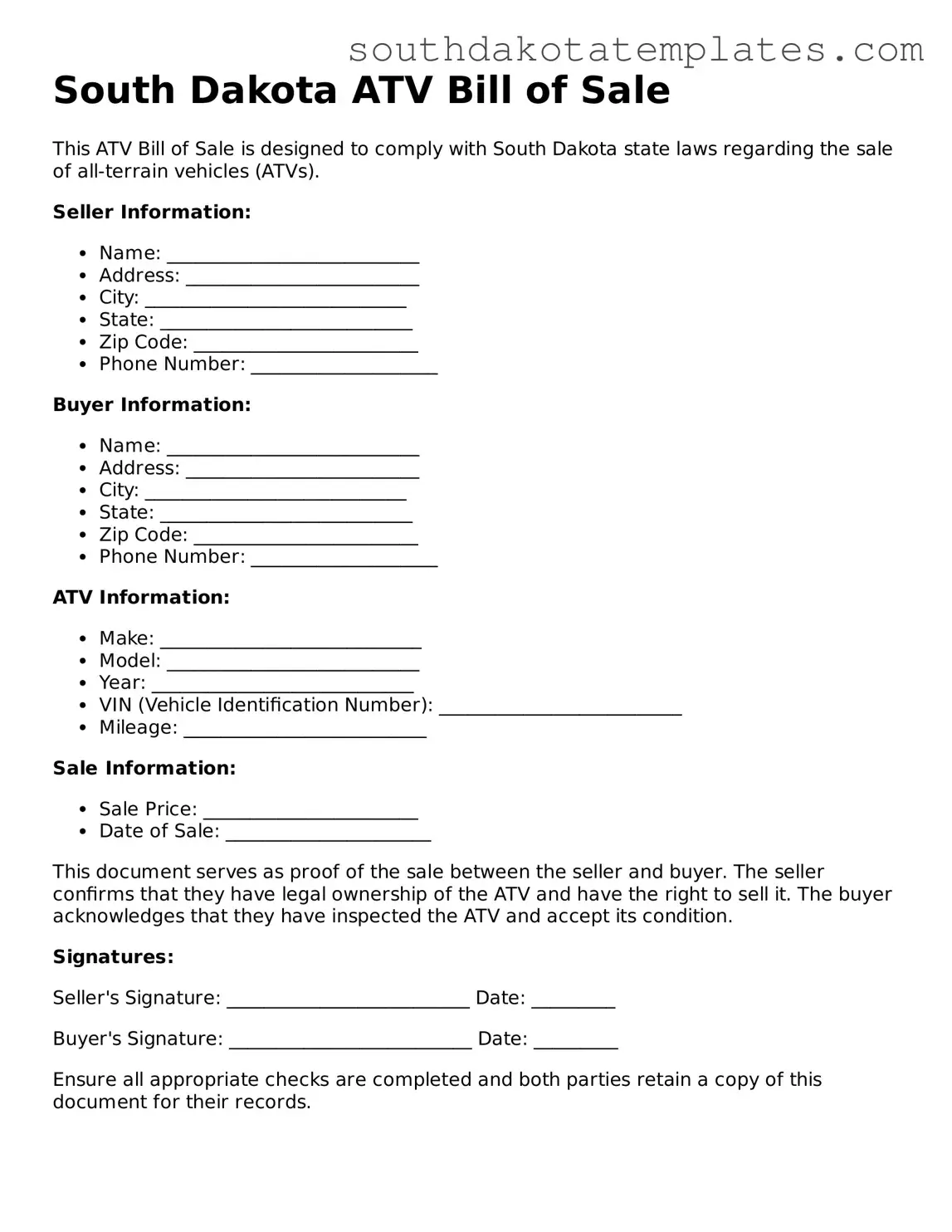Free South Dakota ATV Bill of Sale Document
The South Dakota ATV Bill of Sale form is a legal document that records the transfer of ownership of an all-terrain vehicle (ATV) from one party to another. This form serves as proof of the transaction and includes essential details such as the buyer's and seller's information, the vehicle's description, and the sale price. Ensuring that this form is properly filled out can help both parties avoid potential disputes in the future.
To get started, fill out the form by clicking the button below.
Get ATV Bill of Sale
